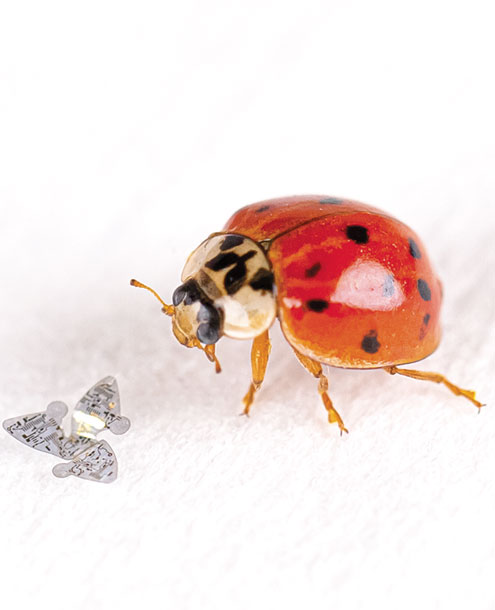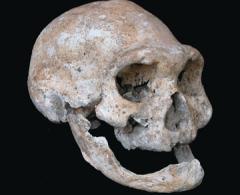
This Article From Issue
January-February 2022
Volume 110, Number 1
Page 13
In this roundup, managing editor Stacey Lutkoski summarizes notable recent developments in scientific research, selected from reports compiled in the free electronic newsletter Sigma Xi SmartBrief.
Evolution to Avoid Poaching
In a case of rapidly occurring natural selection, some elephants are now tuskless. Rampant ivory poaching during the Mozambican Civil War (1977–1992) created an environment in which it was advantageous for elephants to lack tusks. A team led by ecologist and evolutionary biologist Shane C. Campbell-Staton of Princeton University studied the elephants in Mozambique’s Gorongosa National Park and found that nearly 51 percent of the females are now tuskless, compared with 18.5 percent before the civil war. The team sequenced the genomes from 7 tusked and 11 tuskless elephants and found mutations in two tooth-related genes, one of which is tied to the X chromosome and is dominant in females but lethal in males. Their study indicates that the evolution is caused by natural selection, because tusks became a threat to survival. When they looked at elephants born after the civil war, they found that tusked females overwhelmingly had tusked babies, whereas tuskless females had approximately equal proportions of tusked and tuskless babies. Elephants evolved slowly over time to have tusks, which they use for digging, gouging, and other tasks—and their environment coevolved to rely on those behaviors. A widespread and rapid loss of tusked elephants could have deleterious downstream affects on their survival and the health of their ecosystem.

paulshaffner/Flickr/CC BY 2.0
Campbell-Staton, S. C., et al. Ivory poaching and the rapid evolution of tusklessness in African elephants. Science doi:10.1126/science .abe7389 (October 21, 2021).
Trees Signal Volcanic Activity
The forests on Mount Etna turned exceptionally green in the lead-up to the volcano’s November 2002 eruption. The subtle increase in vegetation density was recorded by infrared satellites during the two years prior to the volcanic event. Trees along a distinct line had a burst of green; that line later became an eruptive fissure. An interdisciplinary team out of Switzerland took cores from surviving trees near the fissure and noticed a dip in the oxygen-18 isotope, which they infer was caused by volcanic water vapor in the soil from preeruption degassing. This volcanic water vapor likely created a spike in photosynthesis, leading to the burst of green leaves. Researchers first observed this correlation nearly 50 years ago when Skylab images showed an increase in vegetation five months before the February 1974 eruption. It is not clear how useful this information will be in detecting impending volcanic activity, because the vegetation boom does not occur before every eruption. However, the newly discovered link between decreased oxygen-18 isotopes in tree cores and volcanic activity could allow researchers to reexamine ancient tree rings to identify past eruptions.
Seiler, R., et al. Tree-ring stable isotopes and radiocarbon reveal pre- and post-eruption effects of volcanic processes on trees on Mt. Etna (Sicily, Italy). Ecohydrology doi: 10.1002/eco.2340 (August 17, 2021).
Collision Chains in Baby Planets
In the early Solar System, space rocks that grazed Earth likely pummeled Venus, which may explain why the planetary neighbors are so different from each other. (See “Unveiling Earth’s Wayward Twin,” January–February 2021.) Computer simulations of giant impacts on the young planets, carried out by a team led by Alexandre Emsenhuber of the University of Arizona Lunar and Planetary Laboratory, had two types of outcomes. Fast-moving objects usually produced hit-and-run events, deflecting off the planet, whereas slower-moving ones generally accreted and merged with the planet. In the simulations, the researchers threw Mars-sized objects at Earth and Venus. The objects tended to deflect off Earth and slow down, spiraling inward toward the Sun, so that they were then more likely to accrete with Venus. Through this process, Venus may have acquired significant material from the outer Solar System and ended up quite unlike Earth, despite its similar size. Emsenhuber’s simulations also suggest that Earth’s Moon may have formed through multiple impacts rather than just one, and they raise the question of why Venus does not have its own satellite.
Emsenhuber, A., E. Asphaug, S. Cambioni, T. S. J. Gabriel, and S. R. Schwartz. Collision chains among terrestrial planets. II. An asymmetry between Earth and Venus. The Planetary Science Journal doi:10.3847/PSJ/ac19b1 (September 23, 2021).
Tiny, Flying Microchips

Northwestern University
Swarms of miniature sensors inspired by wind-dispersed seeds could glide on the air and gather information from large areas about matters such as environmental management or disease spread. The microchips, referred to as microfliers, were developed by engineers at Northwestern University led by John A. Rogers. Each microflier is about the size of a grain of sand—making them the smallest human-made flying devices—and can float along the air in unpowered flight. The team studied how four categories of seeds travel through the air: gliders (Javan cucumber seeds, for example), helicopters (big-leaf maple seeds), parachuters (dandelion seeds), and flutterers or spinners (jacaranda seeds). They then set out to replicate those characteristics in the microfliers with the help of a computer model to calculate the optimal design, and used techniques similar to those in pop-up books to build them. The tiny devices could be dropped from an airplane and dispersed with the wind to distribute sensors or wireless communication nodes. Information could then be gathered using radio-frequency wireless links. The development of microfliers has implications for environmental monitoring and disease management; the tiny flying sensors are already raising concerns about potential abuses of population surveillance.
Kim, B. H., et al. Three-dimensional electronic microfliers inspired by wind-dispersed seeds. Nature doi:10.1038/s41586-021-03847-y (September 22, 2021).

American Scientist Comments and Discussion
To discuss our articles or comment on them, please share them and tag American Scientist on social media platforms. Here are links to our profiles on Twitter, Facebook, and LinkedIn.
If we re-share your post, we will moderate comments/discussion following our comments policy.